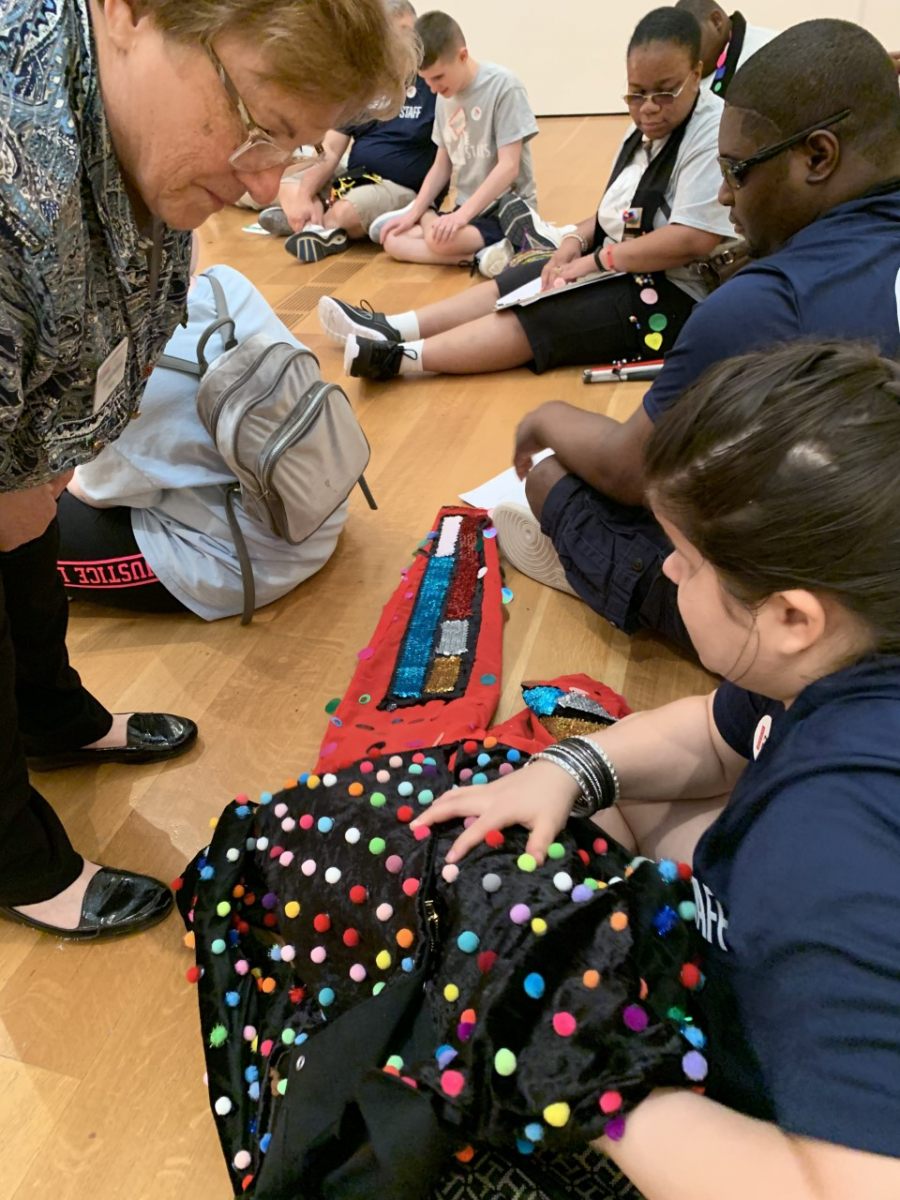Engaging Partners on Art Education for Students with Visual Impairment
Posted by Sep 11, 2019

Kate McLeod
“You mean an artist made this for us?” A student with a visual impairment is seeing a work of art for the first time at an art museum. The student had just been told that a visual artist recreated Native American on Horseback by Ronald Lockett for their group especially.
The group is part of a program called STARS (Social, Therapeutic, Academic and Recreational Services) at the Center for the Visually Impaired in Atlanta, Georgia. This year-long program is for students with visual impairments and helps them “gain the self-confidence and skills necessary to thrive.” The Center for the Visually Impaired (CVI) is in Midtown Atlanta, less than two miles from the High Museum of Art. CVI and the High officially began a partnership in 2016 through a Museum Access for Kids contract from the Kennedy Center VSA. One of the High’s overarching goals in the past few years is to grow and expand inclusive programming for all visitors, including students on the autism spectrum and students with visual impairments. And who better to partner with then our next-door neighbors, CVI?

Through this partnership and others, High Museum staff have received training on working with visitors with various abilities. For the program with the Center for the Visually Impaired, the High consulted with educators who have previous experience in working with students with visual impairments, including one High Museum docent who earned her doctorate in art education and wrote her dissertation on best practices around students with visual impairments in museum settings.
 Part of this museum educator’s dissertation was to provide replicas of four works of art from the High’s collection. She learned through her research that each replica should have large font text and Braille text about the art and the artist, a “visual legend” that went along with the replica, a visual reproduction of the work of art, and additional touch objects for students to experience. The docent then trained museum education staff on these best practices. Our path was also paved with the generosity from CVI on training education staff on how to work with students with visual impairments, the creation of Braille text, and providing additional best practices on working with visitors with visual impairments.
Part of this museum educator’s dissertation was to provide replicas of four works of art from the High’s collection. She learned through her research that each replica should have large font text and Braille text about the art and the artist, a “visual legend” that went along with the replica, a visual reproduction of the work of art, and additional touch objects for students to experience. The docent then trained museum education staff on these best practices. Our path was also paved with the generosity from CVI on training education staff on how to work with students with visual impairments, the creation of Braille text, and providing additional best practices on working with visitors with visual impairments.
From this starting place, the High collaborated with and commissioned four teaching artists to create replicas of four works of art from the High’s collection. The replicas were partnered with the appropriate text and visual legends. On the day of the first visit to the Museum, the objects were placed by the works of art and the tour allowed students to see the objects and feel connected to the museum in a way they had never experienced. Students also worked with professional teaching artists to create wearable art, inspired by one of the works of art on the tour. Both organizations are committed to working together in the upcoming years to provide access to museums, art, and artists for all students.





